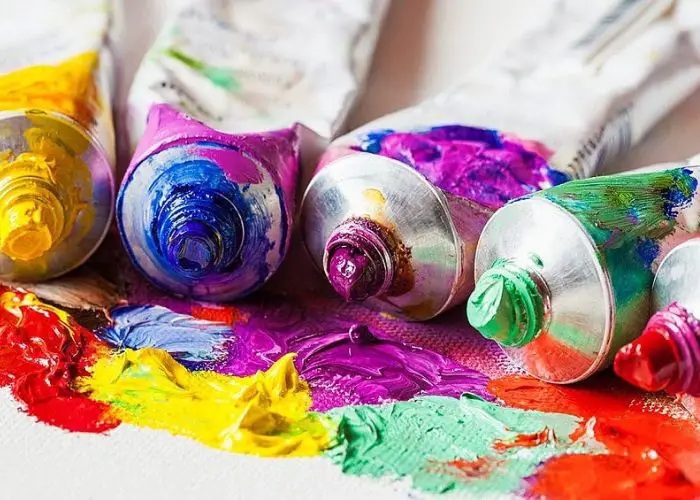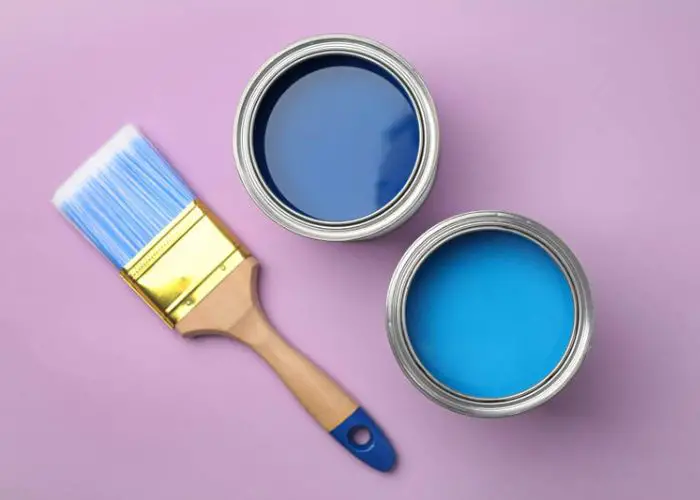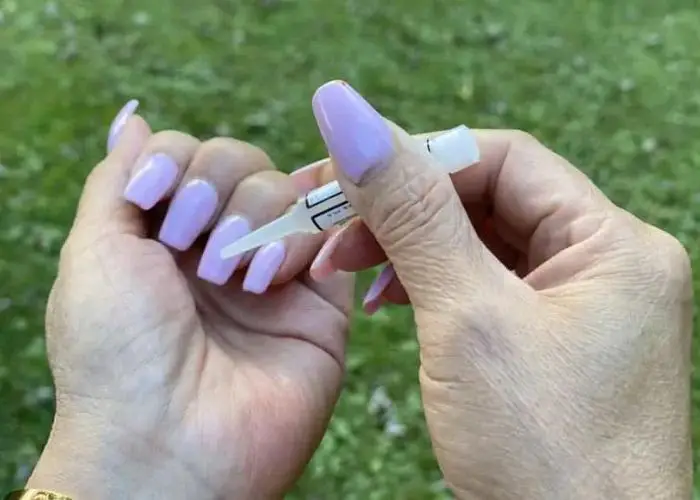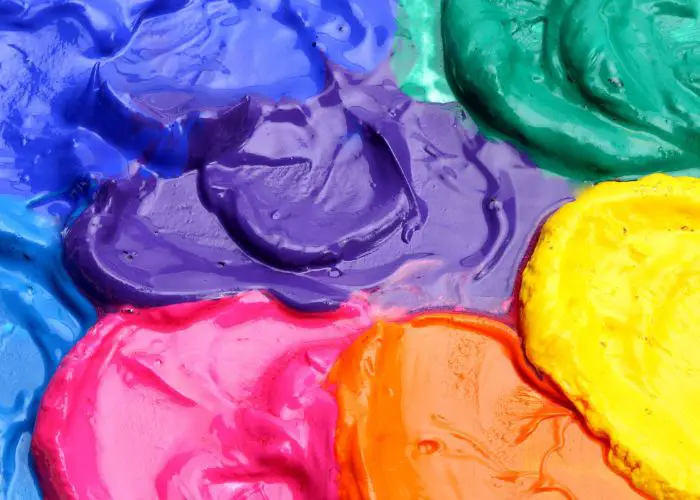No one wants to start a painting project and end up with lumpy acrylic paint. It can be really frustrating, and it might seem like you’re out of luck.
But don’t worry – there are ways to fix this issue! This blog post will discuss several methods on how to fix lumpy acrylic paint.
So whether your paint is just a little lumpy or turned into a big clump, we’ve got you covered. Keep reading for more information!
How to Fix Lumpy Acrylic Paint
To fix lumpy acrylic paint, you can try one of the following methods: Use a blender tool to smooth out the paint; Use a wet brush to apply pressure lightly and smooth out the lumpy areas; If your paint is too thick, add water and mix until it reaches the desired consistency; For clumpy paint, you can try adding a paint thinner or solvent; If your paint is bubbling, apply a layer of varnish to the surface.
Does Acrylic Paint Go Bad?

The short answer is yes, it does. But the longer answer is a little more complicated.
Acrylic paint is made from a synthetic polymer that will eventually break down and degrade.
However, this process can take many years, and if the paint is stored properly, it may never happen.
The best way to store acrylic paint is in a cool, dry place away from direct sunlight. Once opened, sealed containers of paint can last for years.
So if you’re still using that half-empty tube of paint from your college days, don’t worry – it’s probably just fine.
How Long Do Acrylic Paints Last?
“Indefinitely.” But of course, that’s not very helpful. So let’s take a closer look at how long acrylic paints will actually last.
As we’ve said, acrylics are made with pigments suspended in a polymer emulsion. This gives them many of the same qualities as oil paints, but they dry much faster.
Because they’re water-based, they’re also less toxic and easier to clean up. They can last for years, if not decades if kept in a cool, dry place.
However, once they’re opened, the clock starts ticking. Acrylics are susceptible to drying out, so it’s important to use them within 6-12 months of opening the tube.
After that, the colors will start to fade, and the paint will become increasingly difficult to work with. So if you’re looking for paint that will last indefinitely, stick with acrylics.
But if you want your paintings to stand the test of time, make sure you use them up before they expire!
Read more on acrylic paint expiry here.
Why Does Acrylic Paint Get Lumpy?
Acrylic paint is a versatile and easy-to-use medium that is popular with artists of all levels of experience.
However, one common problem that artists may encounter is paint that has become lumpy or thickened over time.
There are several reasons why this may happen, but the most likely cause is that the paint has become too dry.
- Acrylic paint is water-based, so it will begin to thicken and harden if it is not kept properly hydrated.
- Another possible reason for lumpy paint is that the artist added too much thickener to the paint mixture. Too much thickener can make the paint difficult to apply evenly, and it may also cause the paint to develop a “skin” on the surface.
- Another reason why your paint may be lumpy is that it has been contaminated with another substance. This can happen if you dip your brush into another paint color or if you use a dirty palette knife.
How to Fix Lumpy Acrylic Paint
Now that we know why acrylic paint can become lumpy let’s talk about how to fix it!
Method 1: Fixing with a Blender Tool
One way to fix lumpy acrylic paint is to use a blender tool. This is a small, handheld tool that can be used to break up clumps of paint and make the paint smoother.
To use this method, simply dip the blender tool into the paint and then move it around in a circular motion. The paint should start to become smoother and more fluid.
Keep in mind that this method will not completely fix the problem, but it can help to make the paint more workable.
Method 2: Fixing Lumpy Paint with a Wet Brush

Another way to fix lumpy acrylic paint is to use a wet brush. This method is similar to the blender tool method, but it uses a brush instead of a tool.
Simply dip your brush into some water and then run it over the surface of the paint. The water will help to break up the clumps of paint and make the paint smoother.
Again, this method will not completely fix the problem, but it can help to make the paint more workable.
Method 3: Adding a Small Amount of Water to the Paint
If the paint is too thick, you may be able to thin it out by adding a small amount of water. Simply add a few drops of water to the paint and mix it well.
The paint should become thinner and more fluid. Be careful not to add too much water, or an alternative for paint thinner as this can make the paint difficult to work with.
There are several ways to fix lumpy acrylic paint, but the most common methods are to use a blender tool, a wet brush, or to add a small amount of water to the paint.
If your paint is too thick, you may be able to thin it out by adding a small amount of water.
Be careful not to add too much water, as this can make the paint difficult to work with. Experiment with different methods until you find one that works best for you.
How to Fix Lumpy Latex Paint
Have you ever gone to use latex paint only to find that it has developed unappealing lumps? If so, don’t despair!
There are a few simple ways to fix lumpy latex paint and return it to its original condition. The first step is removing as much lumpy paint as possible.
A putty knife or old toothbrush can scrape off the excess paint. Next, add a small amount of water to the paint and stir until the consistency is smooth.
If the paint is still too thick, add a bit more water until it reaches the desired consistency.
Once the paint is smooth, it’s ready to be used! Remember to stir it occasionally while you’re painting to keep the lumps from returning.
How to Fix Lumpy Acrylic Nails

Having acrylic nails applied can give your hands a polished look that can enhance your overall appearance.
But what happens when those nails become lumpy and uneven? Don’t despair – there are ways to fix acrylic nails!
First, start by gently pushing down on the lumpy areas to even them out. If that doesn’t work, you can try using a nail file to carefully sand away the excess material.
If all else fails, you can always go back to your nail technician and have them fix it for you.
In the meantime, just be careful not to catch those nails on anything – they’re bound to snag on something eventually!
How to Fix Chunky Wall Paint
Most of us have experienced coming home to find our walls looking like they belong in a Jackson Pollock painting – not in a good way.
Splotches of paint missed spots and generally texture that would make even the most ardent abstract art lover cringe.
But don’t despair! There are a few easy ways to fix chunky wall paint and get your walls looking smooth and even again.
- First, take a close look at your walls and identify any areas where the paint is particularly thick or uneven.
- Then, gently scrape away any excess paint using a putty knife or other edge tool. Be careful not to go too deep – you don’t want to damage the drywall beneath the paint.
- Once you’ve removed the excess paint, use a sanding block or power sander to even out the area.
- Start with a coarse grit sandpaper and then move to a finer grit until the area is smooth.
- Finally, apply a new layer of paint – making sure to choose a paint that’s compatible with the original coat.
- Once the new layer is dry, step back and enjoy your newly refreshed walls!
How to Save Clumpy Paint
We’ve all been there. You’re in a mid-painting job when you notice the paint has started to separate and form clumps.
What a pain! But never fear; there is a way to save your paint and avoid a trip to the store. All you need is a little elbow grease and some patience.
- First, remove as much of the clumped paint as possible. A putty knife or old toothbrush can help with this.
- Once you have removed as much as you can, it’s time to start stirring.
- Use a clean stir stick and mix the paint thoroughly, being sure to scrape the bottom and sides of the can. It may take some time, but eventually, the paint will start to come together again.
- Once you have a smooth consistency, you can start painting again.
- And next time, be sure to stir your paint regularly to avoid those pesky clumps.
Related Read: How to Clean Paint Brushes With Dried Acrylic Paint
Why is my Acrylic Paint Bubbling?
Have you ever gone to paint only to find that your acrylic paint is bubbling and foaming? It’s a frustrating problem, but luckily there is a way to fix it!
The first step is to identify the cause of the bubbles. There are two main reasons why paint might bubble: either the paint was applied to a surface that was too hot, or the paint was old and has gone bad.
If the problem is that the surface was too hot, the solution is simple: just wait for it to cool down!
Once the surface has cooled, the bubbles should disappear, and you can continue with your painting project.
If the problem is that the paint is old and has gone bad, the solution is a bit more complicated. You’ll need to remove all of the old paint and start fresh with a new can.
How to Store Acrylic Paint
Acrylic paint is a versatile and durable type of paint that can be used for a variety of different projects.
But like all types of paint, it needs to be stored properly to ensure its quality. Here are a few tips on how to store your acrylic paint:
- Always store your paint in a cool, dry place. Extreme heat or cold can cause the paint to change consistency and color.
- Keep the lids tightly sealed when not in use. This will prevent the paint from drying out or becoming contaminated.
- If you’re planning on storing your paint for an extended period of time, consider freezing it. This will keep it fresh and ready to use whenever you need it.
FAQs
What do I do if my acrylic paint is lumpy?
If your acrylic paint is lumpy, there are a few things you can do to fix it. You can try using a blender tool, wet brush, or even just adding water to the paint. If all else fails, you can always try to save the clumpy paint by adding an extender or medium.
Why is my acrylic paint bubbling?
If your acrylic paint is bubbling, it could be because the paint is old or the temperature is too hot. You can try to fix the problem by adding a retarder or an anti-foaming agent.
How do you smooth out acrylic paint on canvas?
If you want to smooth out your acrylic paint canavas, you can try using a wet brush or adding water to the paint. You can also try using an acrylic medium or an extender. Knowing how to smooth out acrylic paint on canvas is essential for creating a professional-looking finished product.
How do you fix uneven acrylic paint?
You can try adding a wet brush or an acrylic medium if your acrylic paint is uneven. You can also try using an extender or a retarder. To fix uneven paint, you will need to experiment with different techniques until you find one that works best for you.
How do you make acrylic paint look flat?
To make your paint appear flat, you can use a variety of techniques. One popular way is to use a blender tool. Another method is to use a wet brush. If you’re using latex paint, you can also try using a heat gun. Finally, if all else fails, you can always save your clumpy paint by putting it in the freezer.
Can you sand down acrylic paint?
Yes, you can sand down acrylic paint. However, it’s important to use fine-grit sandpaper so that you don’t damage the surface beneath the paint.
Conclusion
So there you have it! A few different ways to fix lumpy acrylic paint.
Whether your paint is old and gone bad, or you just applied it to a surface that was too hot, there is a way to fix the problem.
Remember to be patient and experiment with different techniques until you find the best work.
Thanks for reading!











Leave a Reply